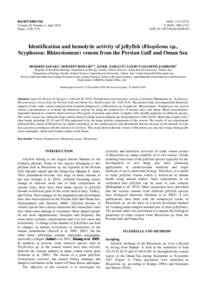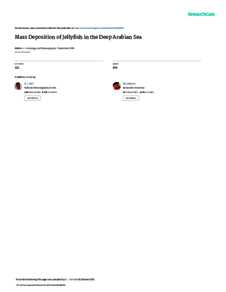Document
Identification and hemolytic activity of jellyfish (rhopilema sp., scyphozoa: rhizostomeae) venom from the Persian Gulf and Oman sea.
Identifier
DOI: 10.13057/biodiv/d200440
Source
Biodiversitas. v. 20, 4, p. 1228-1232
Contributors
Country
Indonesia.
Publisher
Society for Indonesian Biodiversity.
Gregorian
2019-04-01
Language
English
English abstract
The present study investigated the hemolytic capacity of the crude venom extracted from isolated nematocysts of Rhopilema sp. Scyphozoa: Rhizostomeae. Nematocyst was used at various concentrations to evaluate the hemolytic activity by using the nematocysts of human, mice, and sheep. Mean concentration-dependent hemolysis could be observed from 200 µg/mL of protein equivalents or higher with variable potencies in different species. The crude venom was analyzed using sodium dodecyl sulfate-polyacrylamide gel electrophoresis SDS-PAGE. Molecular weight with 3 clear bands including 45, 65 and 95 kDa appeared to be the major protein components of the venom. The results of our experiments indicated that venom of Rhopilema sp. induces hemolysis in the studied species and determined that the increase in the amount of toxin has a positive correlation with the increase of cell lysis. This study showed that the venom of Rhopilema sp. may have many biologically active principles, which need further studies in the future.
ISSN
1412-033X
Resource URL
Category
Journal articles


